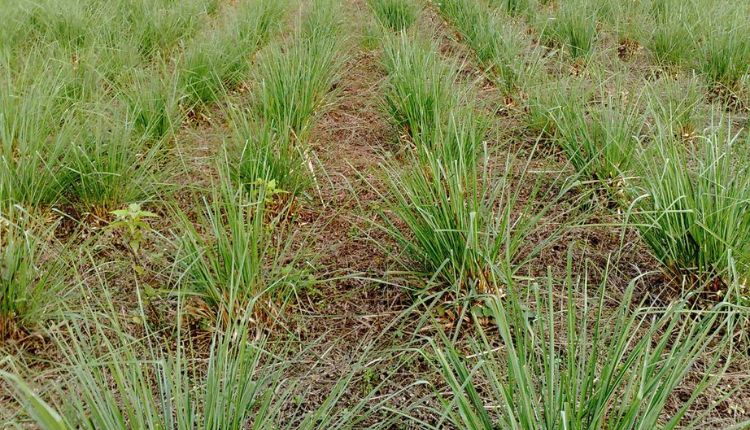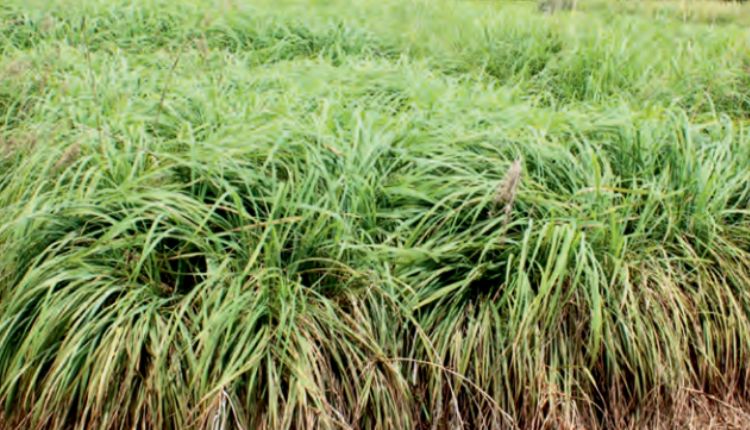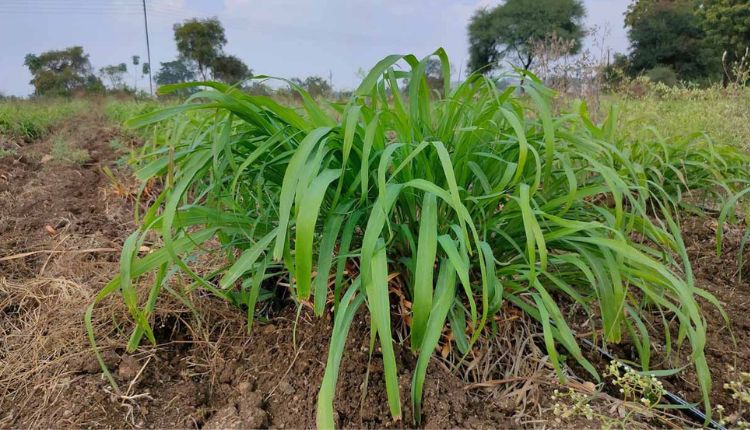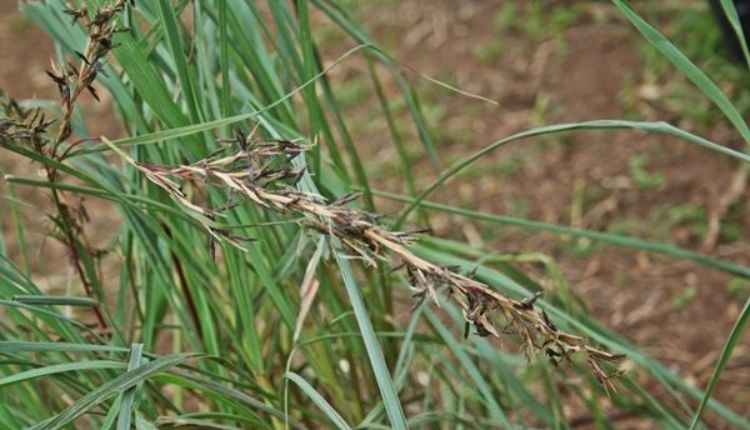Citronella Cultivation to get expensive aromatic oil at cheap cost
Sow once and reap 15 to 20 times for 5 years Aromatic green grass Citronella
Citronella is a perennial aromatic herb. Aromatic oil is extracted from its leaves. It is such a commercial crop that gives high returns at low cost which also plays the role of land reformer. The incidence of pests and diseases is very less in this crop. On average, 1.2 percent essential oil is obtained from citronella grass. Once the crop of citronella is planted, it gives good grass yield and sufficient oil from it for five years. After that the amount of oil starts decreasing.
The demand for citronella oil is increasing rapidly due to industrial and domestic use. Commercial cultivation of citronella is increasing rapidly in many countries including India. That is why citronella cultivation is spreading as a great option for farmers wanting to move away from traditional farming to commercial crops. Obviously, citronella oil is very useful in increasing the income of the farmers.

Uses of Citronella Oil
Citronella leaves are similar to lemongrass and jamarosa. However, their shape is relatively wider and thicker. Its clumps are more full, thick and spread. The aromatic oil of citronella is extracted from its leaves by distillation method. It is used in the production of soaps, odomas, antiseptic creams, odomos and cosmetics. Citronella oil contains 32 to 45 percent citronelyl, 12 to 18 percent geranium, 11 to 15 percent citronellol, 3.8 percent geranyl acetate, 2 to 4 percent citronellyl acetate, 2 to 5 percent lymomycin and 2 to 5 percent elmicin.

Citronella is also a land reformer crop
Citronella is also known as Java citronella. Its botanical name is Cymbopogon winterianus Jowitt. It is a perennial herb of the Poaceae family with aromatic grasses. In addition to commercial, citronella is also a soil remedial crop. That is why the cultivation of citronella proves to be unmatched even in the north-eastern states, West Bengal and such areas of the country where the soil fertility is low. In particular, citronella is cultivated as a land reformer to revitalize tea gardens.
Commercial cultivation of citronella
Apart from India, citronella is cultivated commercially in countries like China, Sri Lanka, Taiwan, Guatemala, Indonesia. Citronella is being commercially cultivated on a large scale in the country mainly in Assam, West Bengal, Jammu and Kashmir, Uttar Pradesh, Maharashtra, Karnataka, Tamil Nadu, Goa, Kerala and Madhya Pradesh. The area under cultivation of citronella in India is more than 8500 hectares. The north-eastern states account for 80 percent of its total production in the country. At present, the price of citronella oil is Rs 1200-1500 per kg.

Land and Climate for Citronella
Loamy and sandy loam soil with pH value of 6 to 7.5 is considered suitable for the cultivation of citronella. But it can be successfully grown in fields with acidic soil with pH value up to 5.8 and alkaline soil with pH value up to 8.5. The temperate and warm climate is considered good for the cultivation of citronella. That is, in areas where the temperature ranges from 9 to 35 °C, 200 to 250 cm of annual rainfall and air humidity or humidity level is 70 to 80 percent, there can be successful cultivation of citronella.
Field preparation for citronella
The crop of Citronella is planted for at least 5 years, so the preparation of the field should be very good for its advanced cultivation. While preparing the field for sowing, two-three times cross and deep plowing should be done. In this, 20 to 25 tonnes per hectare of well-rotted manure or compost should be added at the time of plowing itself. To protect the crop from termites, at the time of last plowing, about 20 kg of 2% methyl parathion powder should be scattered in the field. Apart from this, 160, 50, 50 kg of Nitrogen, Phosphorous and Potash (NPK) respectively should also be given per hectare.
Major Species of Citronella
Jor Lab C-5: This is the latest variety of Java Citronella. It was developed by North-East Institute of Science and Technology, Jorhat, Assam in the year 2016. From this, the quantity of citronella oil is obtained about 1.2 percent. The level of citronyl in the oil is about 35 percent. While its BSI standard is more than 30 percent.
Jor Lab C-2: This is also an old developed variety. The oil content in it is about 0.9 percent. It was also developed by the North-East Institute of Science and Technology, Jorhat.
BIO-13: This is the oldest variety. The amount of oil in it is about 0.9 to 1.8 percent and the amount of citronyl rasasan in it is about 35 to 38 percent.
Seeds for Sowing Citronella
Citronella is sown from root slips. The cost of a route slip is 25 to 50 paise. Each one of the slips is separated by removing the bundles from the one year old crop and then its leaves are cut to prepare the sowing slips. Sowing of all slips is not successful. Usually only 80 percent of the slips get deposited. About 20 percent of slips die. That is why new slips should be sown again on the vacant space.
Citronella sowing and irrigation
The best time for sowing citronella is July-August or February-March. Slips are planted in the field at a depth of 5 to 8 inches. The distance between them should be kept 60X45 cm. First irrigation should be done after sowing. Leaves start emerging from the slips within 2 weeks of sowing. Citronella is herbaceous in nature. Its roots are not very deep. That is why it needs 10-12 irrigations annually. Irrigation is beneficial after 10 to 15 days in summer and after 20-30 days in winter. By the way, irrigation is also related to the nature of the soil, so do not irrigate during the rainy days and keep the field from water logging.

Weeding of citronella crop
Weeds should not be allowed to flourish in the citronella field for 30 to 45 days before the crop is transplanted. To avoid this, weeding is necessary. Weeding and hoeing should be done after each harvest. For chemical control of weeds, a solution of 250 grams of Oxofluroline with 200 litres of water should be sprayed. This spraying should also be done before sowing of citronella plants.
Intercropping, diseases and pests of citronella
The incidence of pests and diseases is very less in Citronella crop. Nevertheless, it is important to recognize its major diseases and harmful insects and treat them at the right time. Due to the smell of citronella, other insects and moths including mahu do not harm the other crops sown and the farmer gets full yield. Citronella can be planted by intercropping with maize, mustard and lentils. With this, farmers can get the benefit of four crops.
Stem borer : Infestation of stem borer insect on citronella crop occurs in April to June. These insects lay eggs on the leaves attached to the stem of citronella. From there the trunks enter the soft part of the stem. Due to this the leaves of the plants start drying and their growth stops. When dry plants are uprooted, rot and small insects are also seen in their lower part. This is called ‘dead heart’. To get rid of it, after weeding, spraying of Carbofuron 3-G at the rate of 10 to 15 kg per hectare should be done.
Lethal Yellowing : Yellowing of leaves or lethal yellowing is a major problem in this crop. For its solution, it is necessary to spray ferrous sulphate and inflow insecticides.
Leaf blast or scorch disease : In the rainy season, the infestation of fungus named Kurkhularia endopognis is also often seen on citronella plants. Due to this, the leaves of the plant turn black along with drying. To prevent this, the fungicide Dithane M-45 should be sprayed at an interval of 20 to 25 days.

Citronella Grass Harvesting and Yield
Citronella crop is ready for harvesting about 120 days after sowing. The crop should be harvested from about 15 to 20 cm above the ground. Subsequent harvesting can also be done in 90 to 120 days after the first harvest. In this way 3 to 4 crops can be taken annually for 5 years. The amount of citronella oil in the crop increases significantly in subsequent years compared to the first year. It remains almost the same in the third, fourth and fifth years. But by the fifth year the amount of oil starts decreasing.
In citronella cultivation, 150-200 kg of green leaves per hectare are obtained in the first year and 200-300 kg of green leaves from the second to the fifth year. Distillation yields 800 ml of citronella oil per hundred kilograms of leaves. Like other aromatic plants, the aromatic oil is extracted from the leaves of citronella by steam distillation. The process of distillation plant is completed in 3 to 4 hours. If the quality of the oil is certified by laboratories like Central Institute of Medicinal and Aromatic Plants, Lucknow (CSIR-CIMAP) and Sugandh and Suras Vikas Kendra, Kannauj, then the price is highest. Citronella leaves after extracting the oil are also used as mulching in the fields. It helps in the accumulation of insects, weeds and moisture.
Contact us:
If farmers want to share information or experiences related to farming with us, then they can do this by calling us on the phone number 9599273766 or by writing an email to [email protected] or by sending your recording. Through Kisan of India, we will convey your message to the people, because we believe that if the farmers are advanced then the country is happy.
You can connect with Kisan of India on Facebook, Twitter, and Whatsapp and Subscribe to our YouTube channel.



